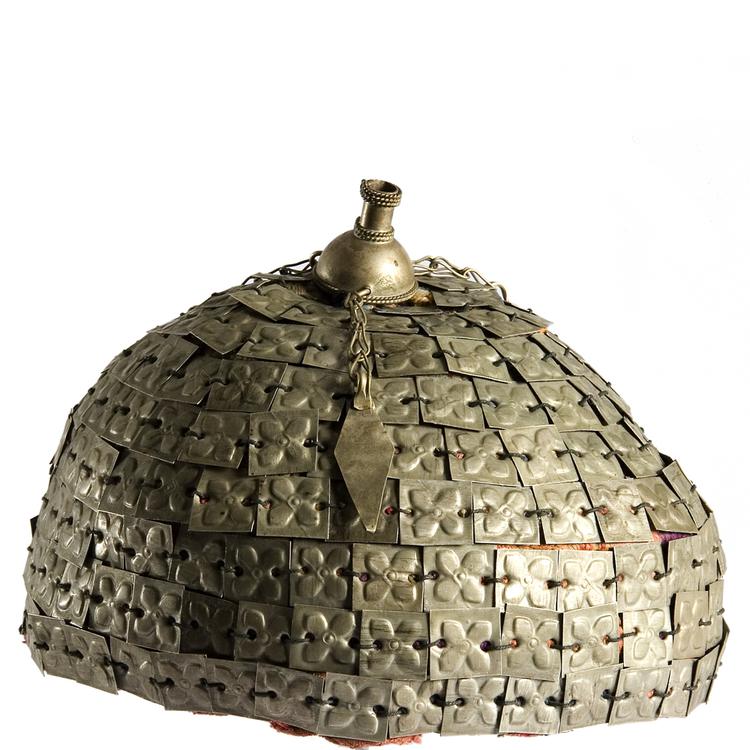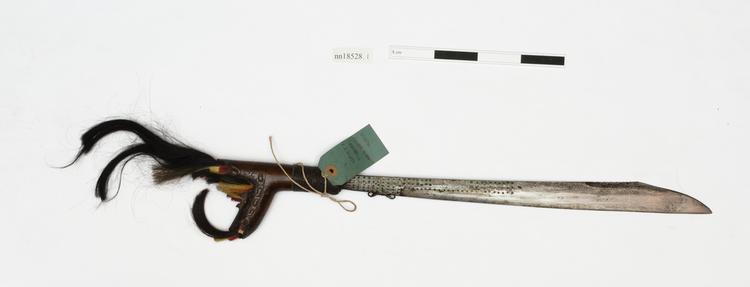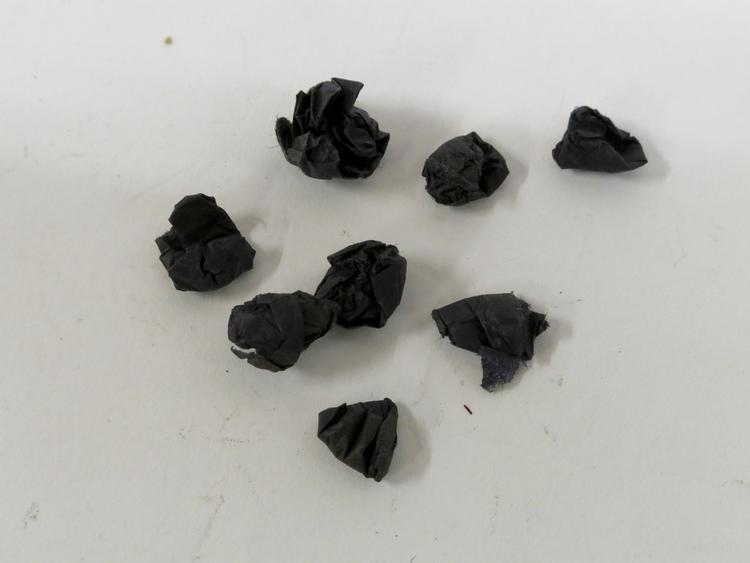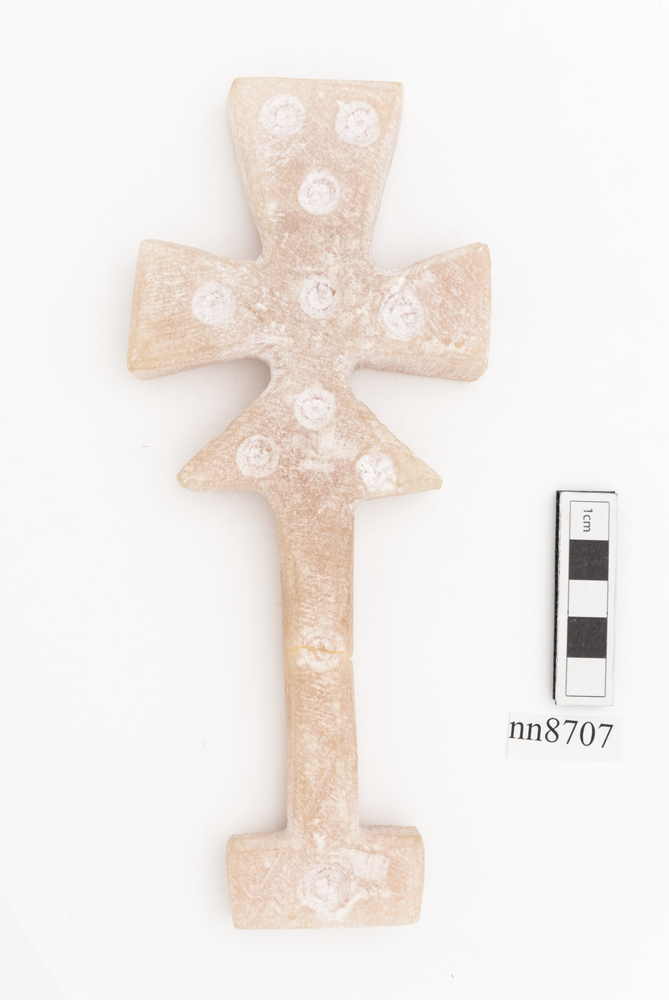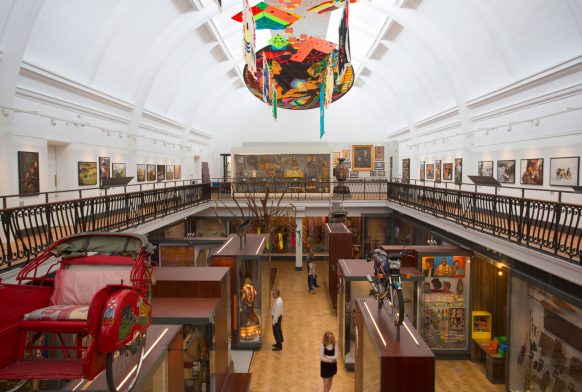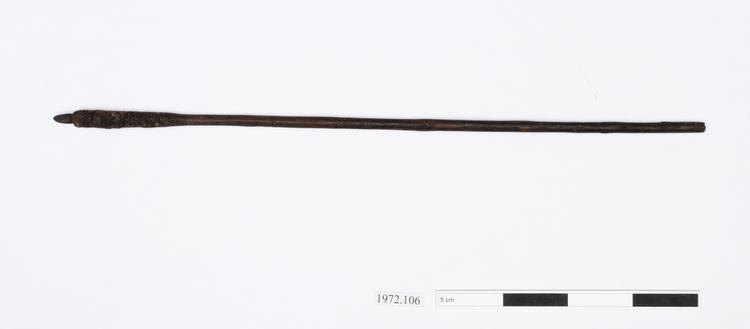
Bleeding arrow with a flat, rounded iron head and a wooden shaft ('siteti') that tapers at the end, which has a notch for a bowstring ('lekejek'). The head is bound to the shaft with goatskin ('sanapati'). Used by morans and elders for either bleeding or killing people. It must stay at home unless hunting in case a cow gets ill and needs bleeding. Made by elders.
Rethinking Relationships Commentary by Antony Njoroge: This arrow is used for letting the blood of a goat. A slightly larger one would be used for letting the blood of a cow. The arrow does not kill the animal, but merely allows blood to be drawn for the family to drink. Ln'goret was also used to lance boils and for healing sore throats (touching it to tongue and neck was said to speed the healing of the sore throat). It was also used during Samburu traditional circumcision ceremonies. The older men would round up the cows and apply a tourniquet around each of their necks. After the coronary artery was well exposed, one of the men would fire a Ln'goret from point blank range into the artery, causing blood to come gushing out. Gourds were then filled up with this blood which then became the first meal of the newly circumcised boys. Lng'oret was used along with a bow called nkawuo.This bow and arrow kit used for bleeding cattle was collectively referred to as nkawuo o lng'oret. Lng'oret was never kept in the same quiver as hunting arrows. It was kept in a safe place in the house in case a cow became ill and needed bleeding.
bleeding cattle



